MDF panels: subtleties of choice and installation

Modern technologies are rapidly expanding the range of building finishing materials. Manufacturers offer a huge variety of types of decorative interior decoration - from cheap plastic to expensive varieties of natural wood or stone. The construction industry appreciated a beautiful, with a wide palette of textures, material from the middle price segment with high performance - MDF panels. Let's consider what is the advantageous difference between MDF and plastic, what these plates are made of, what types they are and how to install it. Let's get acquainted with various decorative options for MDF boards and options for finishing walls and ceilings from laminated and perforated decorative panels.





Peculiarities
MDF is a finely dispersed fraction of wood shavings, pressed under high pressure without the use of an adhesive component in the form of phenol and formaldehyde. Waste wood is crushed. The fine wood fraction undergoes heat treatment, as a result of which a glue fragment is released - paraffin or lignin. The glue fragment sticks the mass together, and the necessary strength is given by pressing.
It is worth noting the environmental friendliness of MDF - the board contains only natural substances that are safe for use: wood and carbide resins, which are not harmful to humans.


The industrial manufacturing process of MDF is the same as the technology for the production of particle boards. The difference is that the particle board contains formaldehyde resins, which are harmful to human health. In terms of ease of use in the construction industry, chipboard is inferior in the reliability of fixing them with screws. After some time of use, loosening of the holes and the loss of screws is possible, it is impossible to repair this chip; during repairs, you have to use another place for the fasteners. MDF boards have a denser structure, which allows you to securely hold the fasteners.



The MDF board has such properties as durability, good resistance to mold and decay. This material shows sufficient water resistance that it can be used even in rooms with high humidity, such as a kitchen. Plates made of finely dispersed fraction of wood shavings have excellent performance characteristics: they do not warp or deform. They carry a large payload due to their durability, a great advantage is the flexibility when heated to create curved surfaces. The disadvantage is flammability.




A melamine film or veneer is glued to the surface of the board. The surface acquires a beautiful decorative appearance, but the disadvantage is its low resistance to mechanical stress. Such damage can be easily repaired by painting it with a suitable color paint. Film lamination gives the board an almost indistinguishable resemblance to natural material, while the price remains affordable.
The film has various colors and textures, which justifies the widespread use of MDF panels for interior finishing work.



MDF panels have gained great popularity due to their ease of installation. Even beginners in the construction business can easily clad walls or floors on their own. Repairing several broken panels will require simple replacement with new parts in the coating.The panels allow you to hide electrical and other communications under the inner frame. It is a hygienic material that is easy to clean. It can be washed with regular detergents or wiped with a damp cloth.
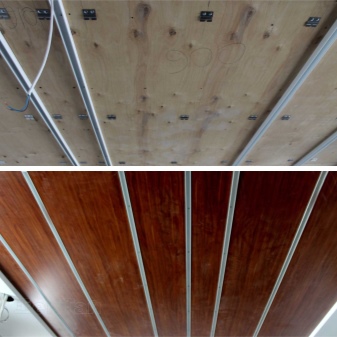

Views
MDF panels differ in their technical characteristics and dimensions. Manufacturers offer three groups of these finishes: solid pressed, laminated and moisture resistant panels. Solid pressed - plates of homogeneous structure without decorative coating. They have good sound insulation performance and an affordable cost. In construction, they are used for painting. After applying a finishing coat of paint, the moisture resistance increases.



Laminated MDF - panels, on one side, lined with a moisture-resistant film with various decorative patterns. Their technical parameters are much higher due to the coating that insulates from the access of unfavorable factors - moisture, temperature extremes. Moisture-resistant panels are characterized by the highest density of wood fraction, which prevents moisture or steam from penetrating into the internal structure, which gives increased strength to the material. This is the highest price category.




There is a division according to the types of front surface finishes. The most expensive are MDF panels faced with natural wood veneer. A thin cut of wood is glued to the facade of the slab using a vacuum bond, adhesive or thermal pressing. The appearance becomes absolutely identical to wood lumber, while the panel is lighter than solid wood boards.


The slab can be veneered on the reverse side, but this option is rarely used in construction, such double-sided panels are used in furniture production. Veneered with veneer MDF have a natural relief structure of a real saw cut of a tree. Another option is fine-line veneer application. Very thin sections of wood are stacked on top of each other at a special angle with the addition of binders, then pressed. The surface is smooth, silky with a beautiful pattern of wood grain weaves.




Veneer increases the sound insulation of the material, allows you to achieve significant savings when replacing natural wood. Care for veneer panels is the same as for completely wooden ones: do not allow moisture to enter, protect from mechanical stress with sharp objects. This material has high aesthetic qualities, you can select the required type of wood and give the desired shade. Panels or mosaics on MDF panels are made from various types of veneer. The artistic and expressive value of such cladding is greatly increased.


The most common type is laminated MDF panels. The lamination process is necessary to impart additional moisture and wear resistance. It consists in the following: a thin melamine or paper-resin film is laid on the finished panel, under the influence of heat treatment, the film is fused into the upper layer and the resin polymerization occurs. Laminated MDF boards are highly hygienic, environmentally friendly, easy to install and maintain. They have a huge decorative potential, since lamination is performed not only on straight surfaces, but also on structural elements of a perforated plate.


Perforation is used to achieve certain visual effects in the interior. The shape and size of the perforations have a significant variety, the consumer can choose the desired pattern. The holes have geometric shapes, floral designs, or other patterns. Carved panels in the wall or ceiling cladding create an original design. With their help, you can give the room a unique oriental style.

Such panels find their application in the decoration of office premises and replace suspended ceilings.Perforation has a large impact on room acoustics, which expands the range of applications to music lounges and recording studios. Such panels are well ventilated, and dry quickly when moisture enters. They allow you to functionally divide the space with translucent partitions. The result is a spectacular backlight.


Modern technologies make it possible to process the surface of the MDF board with paint, which is evenly applied using a spray gun. The facade of the panel is sanded, covered with a layer of primer, followed by a layer of paint. The paint is used matte or glossy, automatic equipment allows you to obtain a uniform uniform dense coating layer. Use only weather resistant paints with a hardener component. Special additives allow you to get a pattern of pearlescent streaks or metallic textures.


For finishing, it is better to purchase ready-made panels painted at the factory. In addition to the usual spray painting under pressure, dry painting is used. A powder coloring pigment is sprayed onto the surface of the panel, then heat treated to melt the pigment. This method produces a high quality, smooth, even color. The last stage is drying under special humidity conditions.

Milled MDF panels are of great interest to designers. These panels allow you to create a 3D visualization of the plane of the wall or ceiling. This effect is created using a special method of pressing the embossed face layer. Paint or PVC film is applied on top. To create a stylish interior, it is enough to choose the desired MDF color scheme.


Lined with MDF paper are also used. These slabs do not withstand moisture and heat, but in some rooms they are convenient for cladding walls or ceilings. Covered with MDF paper are used wherever it is necessary to avoid the formation of condensation on the surface and it is desirable to use a breathable material: dressing rooms, household pantries and other areas with dry air.
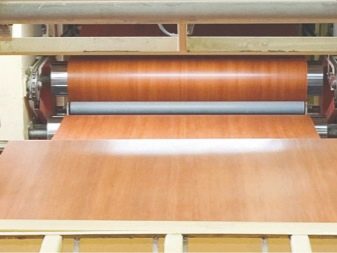

Colors and designs
The design of MDF panels surpasses all the most daring assumptions. Modern technologies make it possible to imitate any of the known natural materials. All types of wood and any shade are presented in retail chains.
Veneer of rare and expensive wood species is cheaper than solid wood and more and more consumers can afford it.



African wenge tree is a very rare expensive materialEven the veneer of this tree is a very expensive finishing component. Its natural beauty and richness of a dark chocolate shade with fibrous light veins is successfully copied by the laminated MDF board. Inexpensive products allow a wide range of consumers to use wenge in finishing. A rich dark color perfectly sets the accents of structural elements.


To create noble interior solutions in light colors, light oak is the ideal choice. Veneer or laminate imitation are indispensable in Scandinavian design and for interior decoration in the style of chalet, Provence, country. Panels with a light oak shade can be used for wall, floor and ceiling cladding with structural beams. For such a design, it is necessary to select the same texture and color of wood, otherwise a harmonious ensemble will not work.
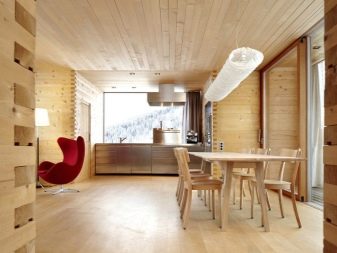

Classic interiors are best finished with rich wood tones. darker color - stained oak or walnut. Maple and ash have an almost white color, the massif of these species is rarely used due to its soft texture, MDF panels allow the use of these types of wood in decoration more widely. Light shades contrast beautifully with dark tones of wenge or red mahogany, kempas, dussia, paduk. Beech, alder, pear, cherry have a delicate shade of pink. The yellow color is present in teak, chestnut and olive woods, which have an unusual zigzag grain pattern.





Italian walnut has become a popular finish in designer interiors. The color of this wood has an interesting grain pattern. A pleasant rich light brown color gives a calm color scheme. This finish looks expensive and sophisticated. It goes well with beige, green and orange colors.
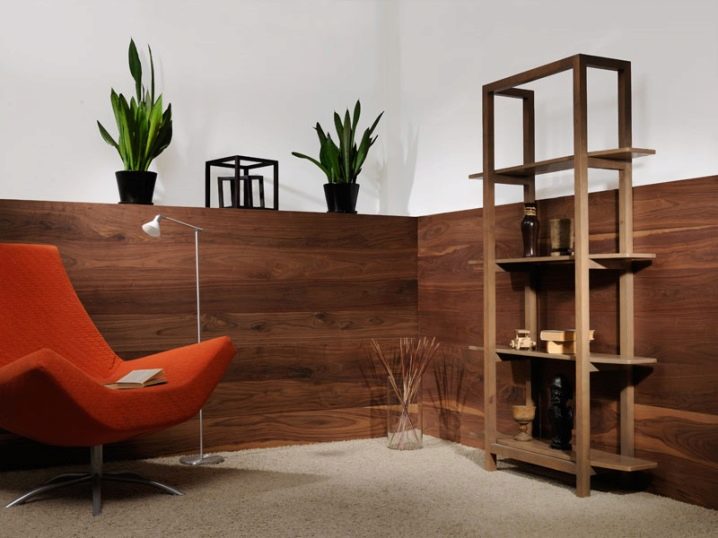
When combining different types of wood flooring, the color matching must be taken into account. For a contrasting design, it is better to stick to the traditional - light with dark. The nuanced combination is more complex, it is necessary to select it according to the harmony of fibers and shades. The surface can be polished or have a matte texture, gloss gives an active vector finish, matt silkiness adds a component of comfort and tranquility. MDF panels make it possible to decorate your interior in a completely original way: imitation of natural wood with perforation.


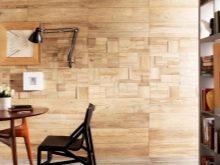
MDF panels can be decorated with natural stone or brick, have a pattern of strict or cyclopean masonry. These imitations can be used as wall decor inserts. An embossed brick or stone wall made of decorative MDF panels will replace real masonry without changing the load on the supporting structures, significantly speed up the finishing and reduce the cost of work.


Lamination allows known natural materials to impart unusual texture: shine to wood or stone. Ultramarine or metallic colored brickwork. The panel can have a texture and color transition. The stone will be interspersed with oak or alder, creating amazing combinations. In the same space, the walls and ceiling will contrast and attract attention.

The color variations of MDF panels are endless. When used in decoration, it is not necessary to purchase all panels in the same color. Today, a combination of several contrasting or nuanced colors is fashionable. Here it is worth being guided by the color spectrum, where neighboring colors or opposite colors are harmoniously combined. It is better for beginners to limit themselves to a maximum of three different colors; only professional designers can competently use a large color gamut.


The panels have a matte or glossy surface texture. The gloss can be either colored or imitate a silvery metallic sheen. The latest design proposition is for glass-like high-gloss panels with excellent reflectivity. Such panels are at the peak of popularity today, they look good next to heavy stone or brickwork.
Glossy colored cladding with white or black plaster looks no less impressive.


Embossed MDF panels have become a real hit in modern interiors. They compare favorably with decorative plaster in that they are easy to dismantle if the cladding is tired or has become unusable. A large enough relief structure gives a 3D effect indoors. Such panels should be used in the form of a panel or a series of inserts in a smooth finish. A wall or ceiling with an embossed pattern will add a cosmic touch to the room.

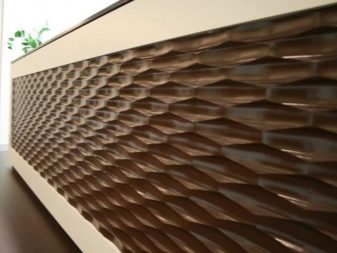
Panels can be embossed similar to vinyl wallpaper. Embossing in the form of monograms will decorate the classic interior. These panels will be an excellent substitute for paper wallpaper. The advantage of paneling is that you do not need to pre-level the walls and the panels are easy to clean, unlike wallpaper. Imitation of silk-screen printing in 3D will become a fashionable design detail of the interior space.


The surface of the panels can be decorated with photo printing. Photo printing allows you to reproduce any image. The same pattern is made up of carpet compositions or beautiful landscapes in the form of a panel of several panels. Imitation of frescoes and mosaics of various colors and textures will become an advantage and will give uniqueness to the interior. Photo printing is a very durable coating, it is glossy and matte.



A panel with a natural landscape on the wall will expand the boundaries of space.An oriental mood will create a pattern in the form of an ornament on the walls. All walls and ceilings should be sheathed with such panels to reproduce the atmosphere of fabulous Asian palaces. African motives are emphasized by animalistic images. Black and white city photographs are very fashionable today.
Photo printed panels can be selected for every taste. It is better to use a large drawing in the form of small inclusions. The view image can occupy an entire wall or two opposite walls.
Photography gives perspective and visually enlarges the room, removes the monotony of decoration and forms a special mood of the interior space.


MDF panels with a surface identical to metal are an indispensable element of decor in high-tech industrial styles - high-tech and loft. Gold and silver glitter paired with dazzling white or black panels add an accent to the luxurious Art Deco setting. In small apartments, shiny stripes on the ceiling or on the walls visually add gradation to the hidden space. Decorative panels should be combined with simple monochrome textures.



Dimensions (edit)
A wide variety of MDF panels has led to their widespread use in construction. Panels with appropriate dimensions are produced for the various needs of the construction industry. The dimensions and weight of the slabs are unified and regulated by technical production standards.

For wall cladding, wall panels are produced with a length of 2.62 meters. A number of manufacturers offer panels of 2.8 meters and 2.44 meters in length. The width corresponds to the type from P-1 to P-5.
P-1 | 100 mm |
P-2 | 125 mm |
P-3 | 150 mm |
P-4 | 175 mm |
P-5 | 250 mm |


MDF boards are produced in length and width of 1.5 meters x 0.1-0.9 meters. The size of the slab depends on the texture of the surface - embossed, perforated and panels with imitation of natural stone reach dimensions of 2.8 by 2.07 meters. Square panels for decorative panels have other sizes - from 29x29 cm to 95x95 cm. The thickness of laminated and painted panels varies from 3 mm to 30 mm.
Coating with veneer implies an increase in the width of the panel in some cases up to 60 mm.


Panel weight depends on dimensions, veneer or relief. To get an idea of the average weight of this finishing material, you should focus on the weight of 16 kg of a panel with dimensions of 2.8 x 2.05 x 0.003 meters and a weight of 142 kg for dimensions of 2.8 x 2.05 x 0.028 meters. For the ceiling, thinner and lighter products are used; for walls, panels with a high coefficient of strength and resistance to mechanical stress are used. If it is necessary to create sound insulation using MDF finishing, it is necessary to select the maximum thickness of the slab. Of course, the weight of such a structure, if the height of the room is large, will be significant.


When calculating the weight of the cladding, pay attention to the panel decor. Lamination and painting will increase weight slightly. Veneer, relief increase this indicator. Perforation, on the other hand, reduces the weight of the structure. For small surfaces, panels or slabs of smaller sizes are chosen, since the cuts will disrupt the decorative finish and create difficulties in sealing the seams. Premises of a large area are best decorated with large slabs and panels.


Differences in the way of laying
MDF for construction purposes is produced in the form of sheets, tiles and lining. Each type of product has its own dimensions, installation method and is used for a certain type of work. At the same time, they all retain the same technical characteristics: environmentally friendly composition, high strength and elasticity, good decorative qualities. The difference lies in the sizes and methods of fastening to each other and to the surface of the wall or ceiling.



Leafy
The most expensive of the above types of products is sheet MDF. It is the basis for creating highly artistic panels or embossed inserts. The sheets are large - up to 2.8 meters in height and 2.05-2.9 meters in length.When ordering from the factory, you can make sheets according to individual sizes and with an exclusive pattern.
The weight of the sheets can reach up to 142 kg, depending on the thickness.


Used MDF sheet for wall decoration in large rooms to create a certain decorative effect of a seamless finish. The sheet is mounted directly on a wall aligned and treated with an antiseptic butt, since it does not have connecting grooves. The best option is to partially include such a finish in the wall cladding due to the bulkiness and cost of the material.


Tile
MDF tiles have similar technical characteristics. It differs from sheets in the form of a square or rectangle of various sizes: from 0.5 x 0.5 meters to 0.95 x 0.95 meters. The tile does not have connecting grooves and is mounted on a prepared wall. Convenience of work with this product - in dimensions convenient for installation and light weight. If the installation of sheet MDF requires the participation of two or more workers, then one person will also cope with laying the tiles. It is enough just to calculate the required number of pieces for finishing, knowing the area of the surface to be finished and the size of the tiles.
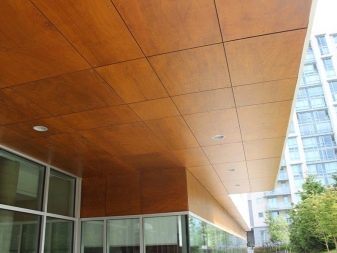

The surface texture has standard colors and sizes like tiles. It is convenient to make mosaic panels from MDF tiles of the same type, but with a different color scheme or texture. The versatility of this finishing material lies in the possibility of using it in a room of any size and configuration. On the market of finishing materials, MDF tiles are presented in the widest range, have a lower cost compared to MDF sheets.



Lining
The most popular is the cheap and beautiful lath material - MDF lining. It has excellent technical characteristics and a wealth of decorative finishes. The slats have dimensions from 2.4 x 0.11 meters and beyond. The standard length is 2.6 meters. Lining is used for decoration and walls and ceilings.
Can be stacked horizontally and vertically, and for a greater decorative effect in the "herringbone".
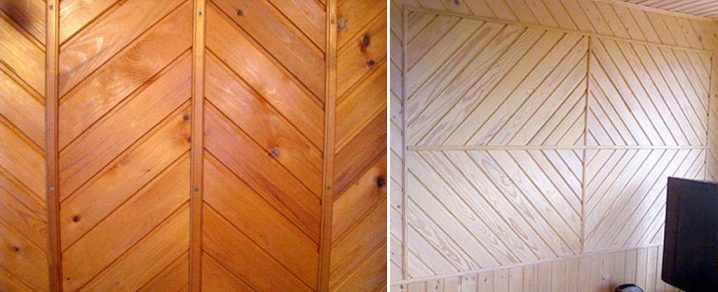
The herringbone pattern is of two types. The panels are laid at an angle of 90 degrees relative to each other, the ends are adjacent to each edge of the longitudinal side. Another option involves the location of the rails at any other angles, while the ends are cut to the same angle and installed end-to-end. This installation requires a certain skill in order for the cladding to turn out to be even with the same slope. You can cut several slats in advance, clean the edge of the saw cut and proceed with the installation.


The lining is characterized by ease of installation, lightness of construction and individual elements. Can be easily shortened to the desired size. On the side faces it is equipped with special grooves for connecting the rails to each other without a gap. To ensure strength and to avoid deformation of structural parts, the rail is mounted on a frame made of beams. This frees you from the need to level the wall and allows you to hide communications inside the frame.


MDF rail, with all the simplicity of installation, requires adherence to the installation technologyso that the rail does not lead. The decorative qualities of the coating depend on this. The location of the slats influences the modeling of the space. The horizontal arrangement will lengthen the wall or ceiling. The transverse arrangement on the ceiling will make the room wider.
The vertical fastening of the lining on the wall will visually make the room higher.


Regardless of the type of product, MDF is an economical finishing material. It does not require careful preparation of the wall surface, as for painting, or laboriousness, as is the case with ceramic tiles. It is easy to assemble, the work takes a little time and does not require professional skill. For cladding, you do not need to purchase additional building mixtures or glue, only self-tapping screws and bars. It is an affordable accessory material. In the process of work, dust and dirt are not formed.


How to choose?
A wide variety of MDF panels makes you competently approach the choice of finishes for a particular room. It is necessary to take into account the temperature and humidity regime in the room - for the exterior decoration of the loggia or the kitchen, you need to select moisture-resistant panels, and for facing surfaces inside, average indicators are sufficient. The decor of the panels must also correspond to the purpose of the room. In the decoration of walls and ceilings, it is better to adhere to one design style.


MDF boards, decorated with veneer, will give the living room or office the necessary solidity. There is no high air humidity, so it is not necessary to spend money on moisture-resistant MDF, but you will need protection against noise, therefore, you need to pay attention to this indicator when buying. Expensive finishing will emphasize the wealth of the owners. Light oak or Italian walnut veneer is an indispensable attribute of interiors designed in a classic style and fashionable minimalist design.

Interior partitions that do not have entrance doors are trimmed with MDF plates to create isolated zones in such transforming spaces. Partitions receive the necessary massiveness when choosing panels in saturated colors. This zoning provides sufficient sound insulation. A sleeping place can be placed behind a partition made of panels, while the light from the kitchen will not interfere with rest. The high decorativeness of MDF boards makes an ordinary wall the main accent of the decor due to its beautiful noble color and an interesting pattern of wood fibers.

To decorate an apartment where the hall and the kitchen are combined, instead of interior partitions, a perforated MDF board is installed, painted or laminated on both sides. Moreover, each side can have its own texture and color, corresponding to the rest of the finish of its zone. Installation of perforated tiles on the bedroom ceiling with spectacular lighting will become a real decoration of the interior. The chic elements add to the metallic finish and blend with the pure white color of the rest of the finish.


For interior decoration of a summer cottage or attic in a country house, it is worth choosing inexpensive laminated or painted slatted products. The owners, without assistance, will be able to sheathe the walls of the room with clapboard. It is necessary to purchase material with increased moisture resistance for rooms that are not heated in winter so that temperature drops and high humidity in the spring-autumn period do not deform the MDF. The same requirement applies to the design of the apron in the kitchen. It is necessary to take care of the insulation of the finishing material from heating - MDF can ignite not only from an open fire, but also from strong heating.


In the children's room, you can allow yourself to show your imagination in choosing a pattern and color, move away from stereotypes and create a bright and cheerful atmosphere instead of a boring traditional interior. MDF boards are perfectly cleanable, this quality is very useful in a children's room. You should not choose expensive facades made of natural or laminated veneer, give preference to bright glossy slabs or slats. Doorways are painted in one of the colors of the panels or casings are selected from the same material. Designers recommend paying attention to panels of a suitable theme: for boys - marine, for girls - fabulous plots.

Installation methods
The installation method for wall and ceiling panels is practically the same. The only difference is that a metal profile and hangers are used for the ceiling. For walls, lathing made of bars is enough. A larger gap is left between the ceiling and the panels to accommodate electrical wiring.
The following tools are required for installation: a pencil, a level, a puncher, a hacksaw for wood and metal, a triangle with a right angle, screws and dowels.



For lining the ceiling, draw a line of the level of the ceiling plane along the walls along the perimeter of the entire room. The ceiling is drawn into 1 x 1 meter squares.A metal profile is attached to the lines. At the intersections, suspensions are mounted. The height of the suspensions is taken at least 10 centimeters for the safe placement of wiring and lamp bases. If the height of the room does not allow the ceiling to be lowered to such a height, it is better to choose a different finish due to the flammability of the material.

For wall panels, the frame is made of wooden beams. Particular attention is paid to the first lathing guide bar. It should be strictly perpendicular to the covering strips, this will require a triangle. First, the lathing beams are attached in 45 centimeters increments to the wall in a horizontal or vertical direction, depending on the direction of the MDF rail. The bars are installed on the wall with a dowel or self-tapping screws.

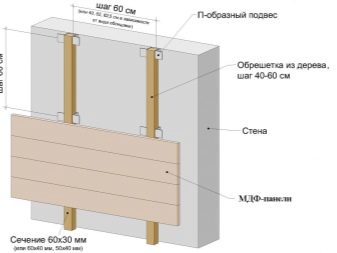
After assembling the frame or lathing, the MDF is measured out, cut to size. The installation of the vertical lining begins from the corner of the entrance door, the horizontal installation - from the floor, the level of the correct installation of the parts is regularly checked by the level. In the places of contact of the rail with the bar, a kleimer is installed, onto which a screw is screwed. This ensures a rigid fastening of the rail to the frame. The last detail is measured and cut in place, since it is not always possible to calculate the gaps along the entire wall or ceiling.



Another mounting method is adhesive. It involves leveling the wall, priming and using glue - liquid nails. The glue is applied to the back surface of the board. Then the slab is pressed against the wall and must be removed immediately in order to finally glue it after 5 minutes. It is more convenient to spread several panels at once to speed up the glue setting process.
MDF has to be cut to size. In order to avoid chipping of the face layer during cutting, it is placed with the decorative side up. Additional elements are laid between the plates, in the corners of the walls, near the door frame. Sheet and tile MDF are supplied with special fittings for joints - a corner and a plinth, which are selected according to color and texture.


To ensure the long-term operation of the panels, the wall or floor slab is pre-coated with an antiseptic. This will prevent the formation of mold or mildew. Before installing panels or plates, holes are cut out in the right places for lamps or sockets, the standard diameter of which is 67 mm. The hole is drilled with a crown drill. To ensure the rigidity of the socket, a bar is stuffed under the hole to prevent the panel from bending. The electrical wiring is attached to the floor slab, the wires are placed in a corrugated hose.



The panels are used for facing arches. For this, the rail of the required size is slightly heated, it acquires plasticity, then it can be bent to the required radius. Then they are attached to the glue in the opening. MDF boards can be used for floor finishing; their installation is carried out according to the parquet laying technology. On an open balcony, it is better to use plastic panels, and the glazed loggia is trimmed with moisture-resistant panels on a metal frame to avoid exposure to moisture.



Painting
Painting is required in two cases: the old decorative coating is damaged and the cladding was made with solid-pressed MDF boards without coating. In the first case, the damaged surface is sanded, wiped from debris and a layer of primer is applied for painting. After drying, several layers of paint are applied. MDF paint has an optimal ratio to hardener 1: 9.
Each layer takes at least 8 hours to dry, it is advisable to apply a polish or varnish on top.


For the second option with an untreated MDF surface, the technology is the same, only grinding is applied according to the actual state of the material. Manufacturers offer already polished slabs. It is necessary to process the joints, if any, then proceed to priming and painting. Paint for MDF should be based on polyurethane resins, alkyd or oil based or nitro enamel.


Care Tips
MDF panels are very easy to clean.Wet cleaning is suitable for removing dust from all types of surfaces. If stubborn dirt appears, they can be washed with any detergent and brush. The latter must be done more carefully on veneered panels. The varnished veneer is wiped with a damp cloth without adding soap. The veneer covered with wax or oil is periodically treated with special agents for the care of natural wood and every few years the oil or wax coating is renewed. For other types of finishes, no special measures are required.


For information on how to decorate walls with MDF panels, see the next video.













The comment was sent successfully.